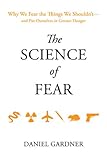
Reader #83 wrote: This is the saga of the Refuseniks, Jews in the Soviet Union who requested to leave knowing they would be treated as enemies of the state and given harsh and at times barbaric treatment. A new documentary written and directed by Laura Bialis tells the story of the nearly thirty years of courage in the face of repression in the Soviet Union. This is polished and evocative filmmaking.
It is spring. This is time of Easter and Passover and the time of year
that it is traditional for television to run the film THE TEN COMMANDMENTS. This year there is another and somewhat parallel story being released, though this one is a documentary of recent history. The film is REFUSENIK, and it tells the story of Jews again held against their will in a country that will not let them go. The country was Russia in the last decades of the Soviet Union. Russia's tradition was to suppress and abuse the Jews with discrimination building to pogroms back in Tsarist times. The coming of communism to Russia brought only a short respite before the new rulers of the country continued with their repressive policies. Under Stalin the repression began again and it specifically targeted the Refuseniks--Jews who had requested to leave the country--for almost three decades. With American and the newly founded Israel ready and anxious to provide a haven for these Jews they needed only the permission of the government to exit. As a policy permission was never granted. Being refused the people came to be called Refuseniks, but their punishment went beyond merely being refused. Jews who requested to leave were treated with barbaric hatred. They typically lost their employment and frequently were imprisoned and even tortured. Many were exiled to the frozen Gulag. Others were treated as mentally ill for wanting to leave the "ideal workers' state" and were committed to mental institutions. With the fall of the Soviet Union and with pressure from the West and worldwide eventually the Jews of the Russia were allowed to leave. 1,500,000 of them did leave, most settling in Israel and the United States.
While in the 1970s and 1980s the Refusenik movement got some public
attention, little has been said about it since. So as not to forget what happened Laura Bialis writes and directs this documentary about the story of the Refusenik movement. The style is mostly eyewitness accounts by participants, many of whom were activists in and out of the Soviet Union in the events of the movement. Their stories are illustrated with archival and newsreel footage. Best known among the activists is Natan Sharansky, who had requested and been denied an exit visa. In 1977 Sharansky was arrested and tried for invented charges of treason and spying for the United States. These charges have since been shown to be false. Sharansky was incarcerated in Leftorovo Prison were he remained under barbaric conditions for 16 months. He was then sent to a prison camp in the Siberian Gulag where he remained for nine more years as his wife desperately worked for his release. By 1986 the USSR was foundering and was anxious for Glasnost. Then President Ronald Reagan made clear that the treatment of Soviet Jews would be a strong consideration in the negotiations. Sharansky was released in 1986. His story and the stories of Kirov Ballet star Valery Panov and of physicist Andrei Sakharov, all Refuseniks, are part of the story.
Where the documentary falls down a bit is in not discussing the motives of the Soviets in repressing the Refuseniks. Michael Gorbachov is quoted as saying that these people were considered to be people of value to the Soviet Union, but they could make little contribution as laborers in the Gulag. It is more likely that he did not want to set a precedent of letting one group go when so many other groups might have wanted the same privilege. And eventually they as well as the Refuseniks got it.
REFUSENIK bears witness to the struggle of the Refuseniks and of the
changes that their courage and that of the international community brought about. This film makes a good pairing with THE SINGING REVOLUTION (2007), which was released earlier this year and tell the story of Estonia's campaign to free themselves from the yoke of the Soviet's. Both have messages that we need just now. REFUSENIK scheduled to be released in New York City May 9 and in Los Angeles on May 23. Grade A.
 Choice of Evil by Andrew Vachss
Choice of Evil by Andrew Vachss












